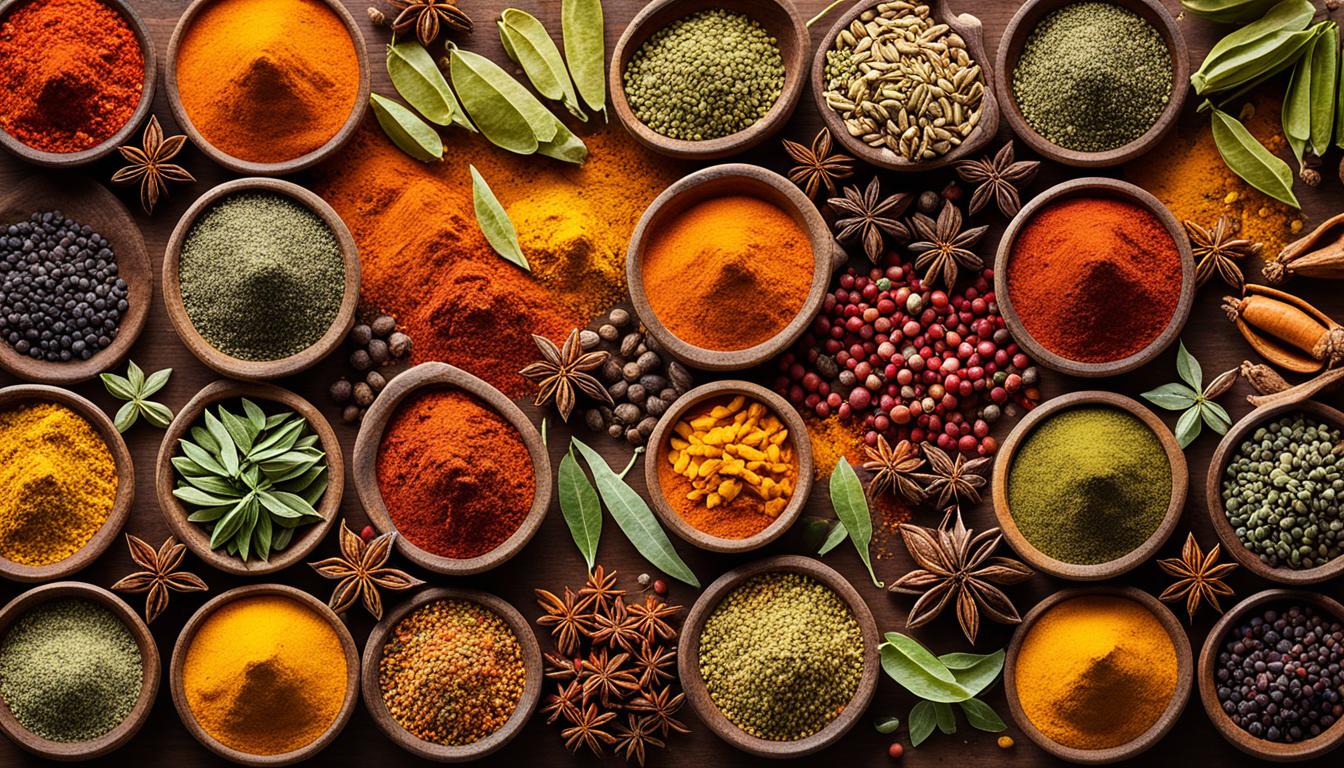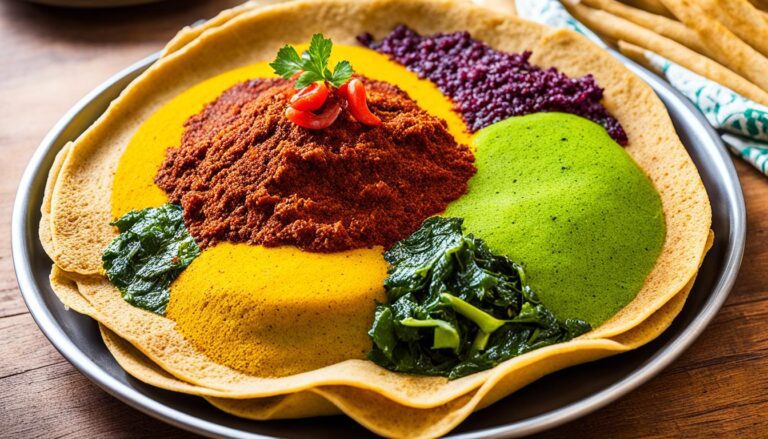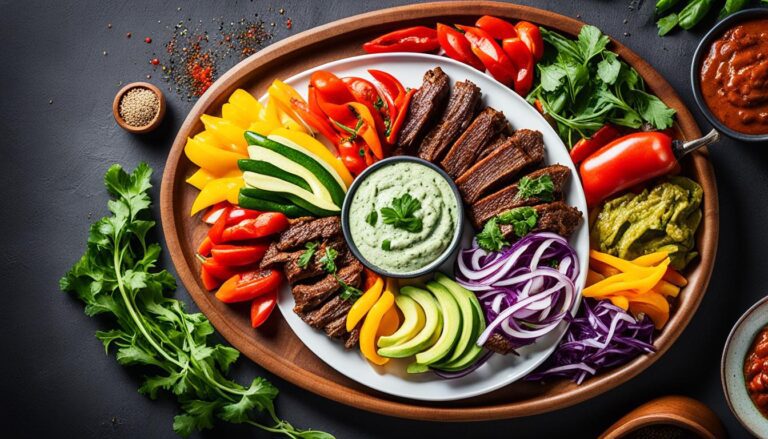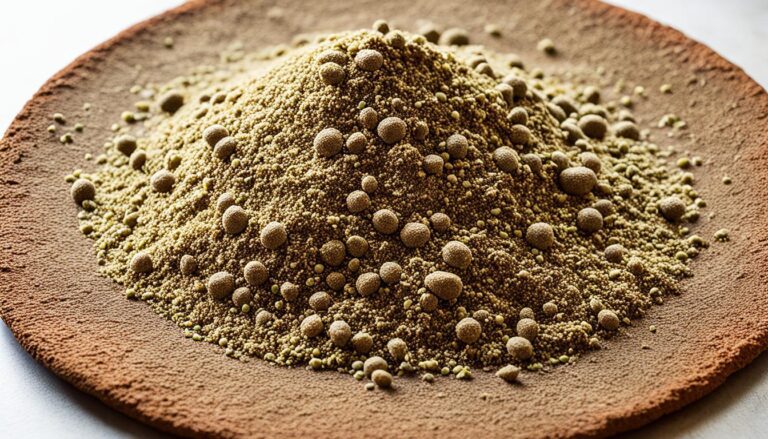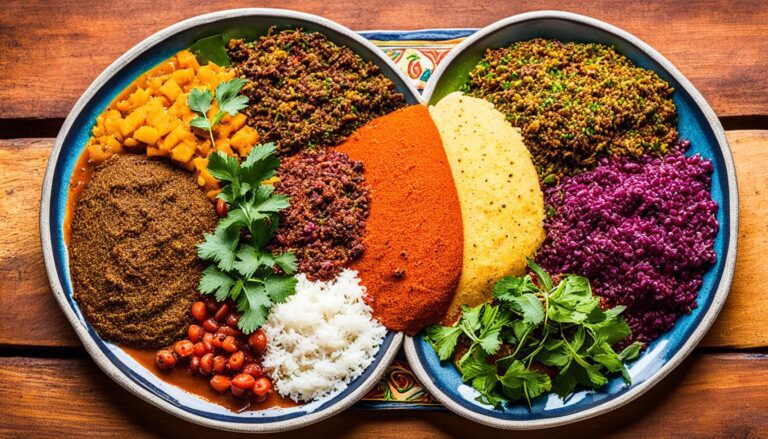Is Ethiopian Food Like Indian Food?
When it comes to diverse and flavorful cuisines, Ethiopian and Indian food stand out as two distinct culinary traditions. But are there any similarities between the two? Do they share common flavors, ingredients, or cooking techniques? Let’s embark on a gastronomic journey to explore the intriguing connection between Ethiopian and Indian cuisine.
Key Takeaways:
- Ethiopian and Indian cuisines are both renowned for their rich flavors and diverse ingredients.
- Both cuisines have been shaped by centuries of cultural influences, resulting in unique taste profiles.
- Spices play a crucial role in Ethiopian and Indian cooking, but they differ in the types and combinations used.
- While there are some similarities in staple ingredients, the way they are prepared and presented varies between the two cuisines.
- Exploring the similarities and differences between Ethiopian and Indian food offers a fascinating insight into the world of global gastronomy.
Cultural Influences on Ethiopian and Indian Food
Both Ethiopian and Indian cuisines are heavily influenced by their rich cultural backgrounds, contributing to the unique flavors and culinary traditions of each region. Let’s explore the cultural influences that shape Ethiopian and Indian food.
Ethiopian cuisine is a reflection of the country’s diverse history and cultural heritage. Influences from various tribes, including the Oromo, Amhara, and Tigray, have contributed to the vibrant flavors and spices found in Ethiopian dishes. The cuisine also draws inspiration from neighboring countries such as Eritrea, Sudan, and Somalia, adding further depth to its culinary identity.
Indian cuisine, on the other hand, is renowned for its extensive use of spices and regional variations. The country’s diverse cultural landscape, with influences from Mughal, Persian, and British colonial rule, has shaped Indian cuisine into a melting pot of flavors and techniques. From the rich curries of North India to the coconut-infused dishes of South India, every region showcases its own distinct culinary traditions.
Both Ethiopian and Indian cuisines share a common thread of cultural influences that have shaped their ingredients, cooking methods, and flavor profiles over the centuries. The use of aromatic spices, such as cumin, turmeric, and cardamom, is prevalent in both culinary traditions, adding layers of complexity to their dishes.
The cultural influences on Ethiopian and Indian food go beyond just the ingredients. The dining customs, rituals, and communal nature of sharing meals are an integral part of both cultures. In Ethiopia, traditional injera bread serves as a communal plate, where various stews and dishes are placed for everyone to share. Similarly, in Indian households, meals are often served on a thali, a large metal platter that holds different dishes and condiments.
By understanding the cultural influences that shape Ethiopian and Indian cuisines, we can appreciate the intricate flavors and culinary traditions that make each cuisine unique. In the following sections, we will explore the regional variations, spices, staple ingredients, and dining traditions of both Ethiopian and Indian food, diving deeper into the delicious world of these rich culinary traditions.
Regional Variations in Ethiopian and Indian Food
Like Indian cuisine, Ethiopian food also showcases a diverse range of regional variations, each offering its own unique flavors and dishes. Exploring the regional variations in Ethiopian and Indian food allows us to appreciate the rich culinary traditions of both cultures.
In Ethiopia, the cuisine differs from one region to another, reflecting the distinct tastes and cooking styles of each area. For example, in the northern highlands, traditional dishes like doro wat (spicy chicken stew) and injera (fermented flatbread) are popular. On the other hand, in the southern parts of the country, you’ll find dishes like kitfo (minced raw meat with spices) and tibs (grilled meat) dominating the culinary scene.
Similarly, Indian cuisine encompasses a wide range of regional variations, each with its own specialty dishes and flavors. The northern region is known for its rich curries, such as butter chicken and paneer tikka, while the coastal regions of South India offer a tantalizing array of seafood dishes like fish curry and masala dosa.
Despite the geographical distance between Ethiopia and India, it’s fascinating to see how both cuisines have developed regional variations that reflect the diversity within their respective cultures. These regional differences contribute to the overall richness and depth of Ethiopian and Indian food.
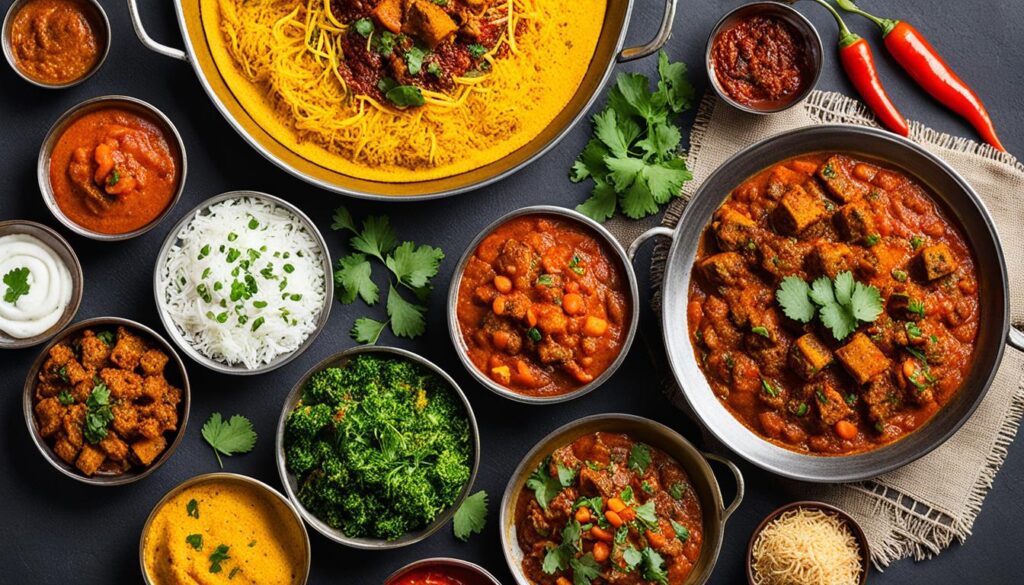
Exploring the Spices and Ingredients
One of the key factors contributing to the unique flavors of Ethiopian and Indian food is the wide array of spices and ingredients used. In the next section, we will dive deeper into the spices commonly found in Ethiopian and Indian cooking and discover how they add depth and complexity to their dishes.
Spices and Flavor Profiles in Ethiopian and Indian Cooking
In Ethiopian and Indian cuisine, spices are the secret ingredients that take their dishes to a whole new level. Both Ethiopian and Indian spices are known for their vibrant flavors and aromatic profiles, enhancing the taste and texture of the food.
When it comes to Ethiopian spices, one cannot overlook the famous spice blend called “berbere.” Made from a combination of chili peppers, garlic, ginger, and a variety of other herbs and spices, berbere adds a spicy kick to Ethiopian dishes, including the popular dish, Doro Wat. Other essential Ethiopian spices include fenugreek, cardamom, and cinnamon, which contribute to the unique flavor profiles of various Ethiopian stews and sauces.
In Indian cooking, a wide array of spices is used to create the distinct flavors that we associate with this cuisine. From the earthy warmth of cumin and coriander to the bold and fiery notes of chili powder and turmeric, Indian spices create a symphony of flavors in dishes like curry and biryani. Each region in India has its own spice blends and unique combinations, such as garam masala in the North and sambar powder in the South, adding depth and complexity to their respective culinary traditions.
While both Ethiopian and Indian cuisines rely heavily on spices, they differ in the specific blends and combinations used. Ethiopian spices tend to have a more pronounced heat, while Indian spices showcase a wider range of flavors, from savory to tangy to sweet. These distinct spice profiles contribute to the rich and diverse culinary heritage of both countries.
In the next section, we will explore the staple ingredients that form the foundation of Ethiopian and Indian cuisines, uncovering more similarities and differences along the way.
Staple Ingredients in Ethiopian and Indian Cuisine
When it comes to Ethiopian and Indian cuisine, there are some common ingredients that serve as the foundation of both culinary traditions. These staple ingredients, including legumes, grains, and vegetables, contribute to the vibrant flavors and unique dishes found in Ethiopian and Indian food.
In Ethiopian cuisine, grains such as teff, barley, and millet are often used to make injera, a traditional sourdough flatbread that serves as a base for various stews and dishes. Legumes like lentils and chickpeas are also commonly featured, providing a good source of protein in many Ethiopian meals.
Similarly, Indian cuisine relies heavily on grains like rice, wheat, and millet. Rice is a staple in many Indian households and is often served as the main component of meals. Legumes, such as lentils, kidney beans, and chickpeas (known as dal in Indian cuisine), are widely used in Indian cooking, providing essential nutrients and flavor to dishes.
In addition to grains and legumes, vegetables play a crucial role in both Ethiopian and Indian cuisine. Ingredients like tomatoes, onions, garlic, and various greens are frequently incorporated into Ethiopian and Indian dishes, adding depth and freshness to the overall flavor profiles.
To get a visual sense of these staple ingredients, take a look at the image below:
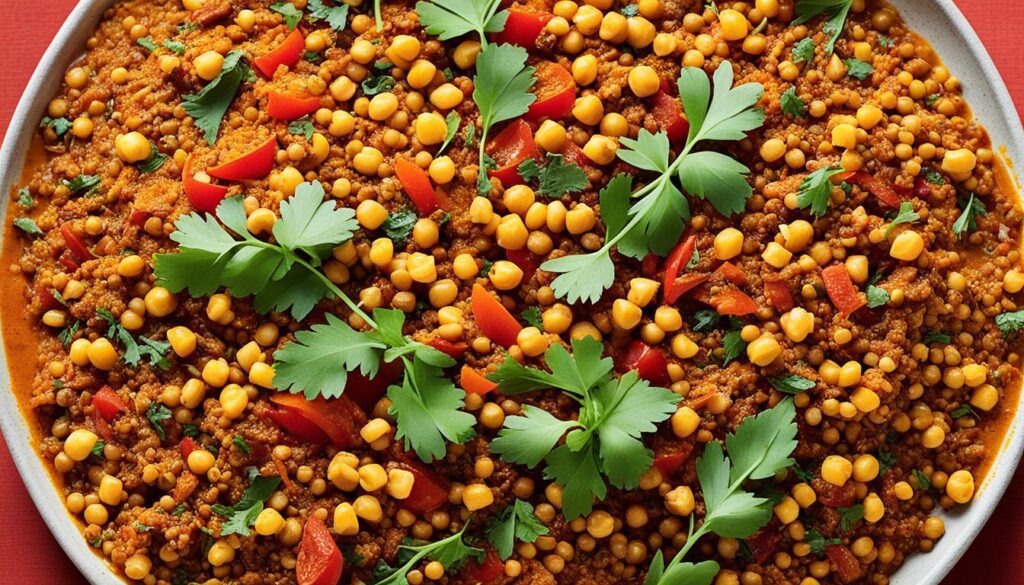
As you can see, the image showcases a variety of legumes, grains, and vegetables commonly used in Ethiopian and Indian cooking. These ingredients not only provide essential nutrients but also contribute to the rich and diverse flavors that define both culinary traditions.
So, whether you’re exploring Ethiopian cuisine or Indian cuisine, you’ll find that legumes, grains, and vegetables are fundamental elements that make these cuisines truly special and delicious.
Dining Traditions and Presentation in Ethiopian and Indian Food
When it comes to Ethiopian and Indian cuisine, dining traditions and culinary presentation are just as important as the flavors themselves. Both cultures have unique practices and etiquettes surrounding mealtime that add a special dimension to their respective culinary experiences.
In Ethiopia, dining often revolves around sharing a communal meal. Traditional Ethiopian dining is characterized by the use of injera, a sourdough flatbread, as a utensil. The injera is used to scoop up a variety of stews, known as wats, and other dishes. This communal style of eating fosters a sense of togetherness and encourages interaction among diners.
Indian dining traditions, on the other hand, vary depending on the region and occasion. In many Indian households, meals are still enjoyed sitting on the floor, with family members gathering around a large mat or low table. Using their right hand, which is considered cleaner than the left, Indians traditionally eat their meals without utensils. This practice of eating with the hand is believed to enhance the connection between the food and the senses, as well as foster a more intimate dining experience.
Culinary presentation also plays a significant role in both Ethiopian and Indian food. In Ethiopian dining, dishes are often served on a large platter, with injera lining the bottom and various items placed on top. The vibrant colors of the different wats and side dishes create a visually appealing spread that showcases the diversity of Ethiopian flavors.
In Indian cuisine, presentation is an art form in itself. Dishes are carefully arranged and garnished with herbs, spices, and colorful ingredients to create visually stunning creations. Whether it’s the elaborate thali, a traditional Indian meal served on a round platter with small bowls of different dishes, or the intricately designed desserts, Indian culinary presentation is a feast for the eyes.
Conclusion
After a thorough exploration of Ethiopian and Indian cuisines, we have uncovered fascinating similarities and differences between these two vibrant culinary traditions. While Ethiopian food and Indian food each have their distinct flavors and cooking techniques, we found common threads that contribute to the appeal of both cuisines.
Firstly, the use of aromatic spices is a hallmark of Ethiopian and Indian cooking. From berbere in Ethiopian cuisine to garam masala in Indian cuisine, these spices infuse depth, warmth, and complexity into dishes, creating unique flavor profiles that captivate the taste buds.
Secondly, both Ethiopian and Indian cuisines feature a variety of vegetarian and vegan options. Legumes, grains, and vegetables take center stage in many traditional Ethiopian and Indian dishes, showcasing the abundance and versatility of plant-based ingredients in these cultures.
Furthermore, the communal aspect of dining is another shared characteristic between Ethiopian and Indian food traditions. Both cultures emphasize the importance of sharing meals with family and friends, fostering a sense of community and togetherness around the dining table.
While Ethiopian and Indian cuisines have their distinctions, it is clear that they share a passion for bold flavors, a reverence for spices, and a rich culinary heritage. Whether you are exploring the savory delights of injera and doro wat in Ethiopia or indulging in the aromatic curries and flavorful biryanis of India, both cuisines offer a truly unforgettable gastronomic experience.
Discovering the culinary similarities and differences between Ethiopian and Indian food opens our eyes to the rich tapestry of flavors and traditions that unite diverse cultures around the world, proving that food truly is a universal language that brings people together.

